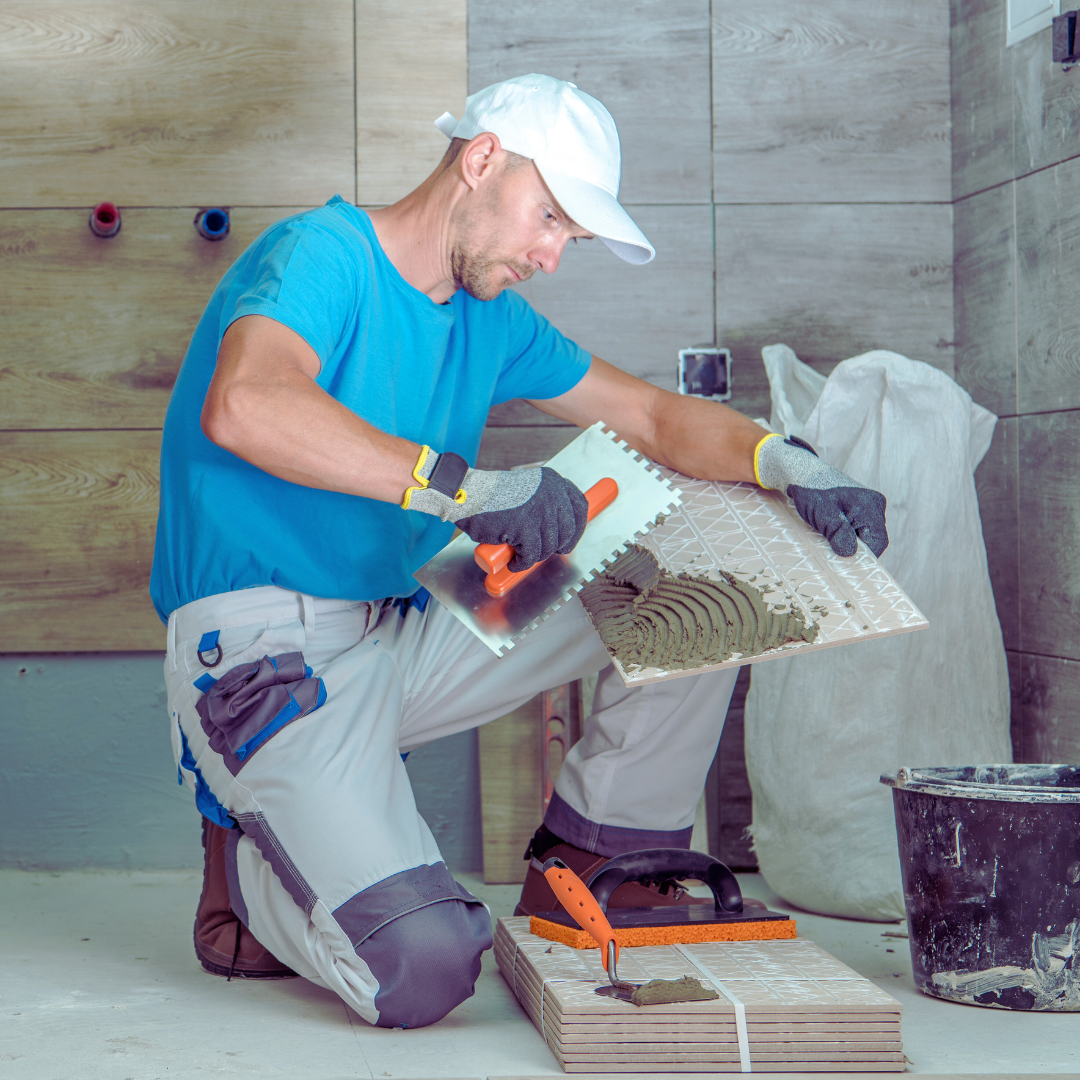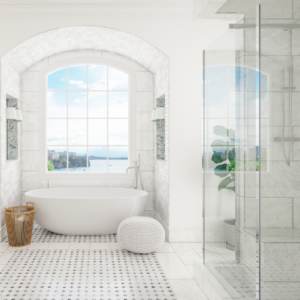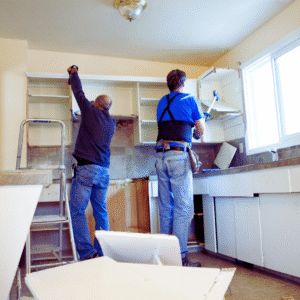Planning a bathroom remodel can seem daunting, but with the right approach, it becomes a manageable project. Understanding the essential steps, from setting a budget to selecting fixtures, can streamline the process and ensure a successful outcome. This guide will provide you practical insights into the entire remodeling journey, making it easier to visualize the desired results.
Choosing the right design and layout is crucial for maximizing space and functionality. They should consider factors such as lighting, storage, and the overall style that fits their home. A well-thought-out plan not only enhances aesthetic appeal but also improves daily activities.
Staying organized throughout the planning stages is vital. Creating a timeline, gathering inspiration, and working with qualified professionals can lead to a smoother transformation. With careful consideration and preparation, achieving a beautiful and functional bathroom is entirely within reach.
Initial Planning and Budgeting
Effective planning and budgeting are crucial for a successful bathroom remodel. By establishing a clear budget, defining design goals, and creating a project timeline, one can streamline the entire renovation process.
Setting a Realistic Bathroom Remodel Budget
Creating a detailed budget is the first step in any bathroom renovation. Start by assessing your finances and determining how much can be allocated to the remodel. Common expenses include:
- Materials: Tiles, fixtures, and cabinetry.
- Labor: Contractor fees or DIY costs.
- Permits: Necessary legal approvals.
It’s wise to set aside an additional 10-20% for unexpected costs. Research local pricing for materials and labor to ensure the budget is realistic. This provides a solid foundation for all subsequent planning.
Defining Bathroom Layout and Design Goals
Before selecting materials or fixtures, it is important to establish clear design goals and a layout. Key considerations include:
- Functionality: Will the remodel improve usability?
- Style: What aesthetic is desired—modern, traditional, or eclectic?
- Space: How can the layout maximize area?
Create a list of priorities and envision how the space will be used. Use design software or sketch ideas to visualize potential layouts. Document these goals to refer back to as the project progresses.
Establishing the Project Timeline
A well-structured timeline helps maintain momentum throughout the remodel. Start by outlining major milestones, such as:
- Design Approval: Finalizing layout and style.
- Construction Start: When work will commence.
- Completion Date: When the project will end.
Consider factors like permitting times and contractor availability. Break the timeline into manageable phases, allowing flexibility for adjustments. Regularly update the schedule as the project unfolds to stay on track.
Structural Assessment and Pre-Renovation Steps
Before starting a bathroom remodel, a thorough structural assessment is crucial. This includes inspecting plumbing systems and the subfloor, as well as evaluating fixture placement and hardware. These steps ensure that the renovation is feasible and will meet safety standards.
For homeowners, engaging an experienced local contractor early can streamline structural inspections, permitting, and any necessary reinforcements. A reputable remodelling company can coordinate trades, anticipate regional issues, and help develop a realistic scope. For example, Apex Construction professionals can provide practical, site-specific solutions for custom remodels and restorations. Bringing that expertise in early, before demolition, reduces surprises and helps keep the project compliant with local codes. This collaboration also aids in selecting moisture-resistant materials and detailing subfloor repairs to extend the life of finishes.
Inspection of Plumbing and Subfloor
A comprehensive plumbing inspection is essential. This involves checking for leaks, ensuring pipes meet local codes, and verifying water pressure. Any damaged or outdated plumbing components should be replaced during this phase.
The subfloor also requires careful evaluation. It should be level, dry, and free from rot or mold. Any issues with the subfloor can lead to further complications later. If the subfloor shows signs of deterioration, it may need reinforcement or replacement before proceeding with the remodel.
Evaluating Fixture Placement and Hardware
Fixture placement is key for both functionality and aesthetics. It is important to consider the existing layout and how it can be improved. This may involve relocating sinks, toilets, or bathtubs for optimal use of space.
Choosing the right hardware is equally important. Options should match the style of the bathroom while also being durable. Factors such as water efficiency and ease of installation should be considered to ensure a successful remodel that enhances the overall space.
The Remodeling Process: Demolition to Installation
This phase includes critical steps that ensure your bathroom remodel is carried out efficiently and safely. Proper demolition sets the stage for new installations, while careful selection and installation of flooring, cabinets, and fixtures create a functional space.
Safe and Efficient Demolition
Demolition involves removing old fixtures, flooring, and any unnecessary components. It’s vital to protect adjacent areas by using drop cloths and sealing off spaces with plastic sheeting.
Start by turning off the water and power supplies. Use tools like sledgehammers and reciprocating saws to carefully remove fixtures. Dispose of debris in accordance with local guidelines.
Assess the plumbing and electrical systems as they are exposed; repairs should be addressed before new installations. Taking safety precautions, like wearing goggles and masks, is crucial throughout the demolition process.
Installing New Flooring and Porcelain Tiles
Choosing new flooring is essential for durability and aesthetics. Porcelain tiles are popular for their moisture resistance and ease of maintenance. When installing, ensure the subfloor is level and clean.
Begin by laying down a cement backer board for proper adhesion. Follow up with thin-set mortar to secure the tiles in place. Use spacers for uniform grout lines.
Once tiles are installed, allow them to set before grouting. Select a grout color that complements the tiles. To finish, you should apply a sealant to protect against moisture and stains, enhancing the longevity of the flooring.
Selecting and Installing Cabinets, Countertops, Fixtures and Vanity
Choosing cabinets involves evaluating available space and style preferences. You can opt for materials that withstand humidity, such as veneered plywood or moisture-resistant MDF. Measure the available space accurately, ensuring that cabinets fit without gaps. During installation, ensure they are anchored properly to wall studs for stability.
In addition to cabinetry, selecting the right countertops is equally important to complement the cabinets while enhancing both functionality and aesthetics. Durable, moisture-resistant materials like quartz, granite, and marble are popular choices that offer both elegance and longevity.
For those unsure about design options or material suitability, researching local providers can be very helpful. Therefore, searching online for “bathroom countertops near me” can provide access to a range of styles and professional services, making it easier to find the perfect countertop to suit the bathroom.
When it comes to fixtures, you can consider faucets, sinks, and lighting that align with the overall design theme. Install fixtures carefully according to the manufacturer’s instructions, taking care to check for leaks. A well-coordinated selection of fixtures enhances both the functionality and the aesthetic appeal of the bathroom.
Beyond cabinetry and fixtures, choosing the right vanity for your bathroom is essential for achieving both convenience and a cohesive look. Consider factors such as storage needs, sink type, and available floor space. Whether you prefer a floating vanity for a modern feel or a freestanding model for added storage, the right choice can significantly improve organization and elevate the overall design of the room.
Finishing Touches and Final Details
Attention to detail during the final phase of a bathroom remodel can enhance functionality and aesthetics. Key elements include strategic lighting and comprehensive quality checks.
Bathroom Lighting: Task and Ambient Solutions
Effective lighting is crucial in any bathroom remodel. A combination of task and ambient lighting creates a balanced environment.
Task Lighting should focus on areas requiring clear visibility, such as above mirrors and near vanities. Using sconces or LED strip lights can minimize shadows and ensure adequate brightness for grooming activities.
Ambient Lighting sets the mood. Options like recessed lighting or a central pendant fixture create a warm atmosphere. For best results, you can incorporate dimmers to adjust brightness based on time of day and activity.
You can also consider color temperature; warmer tones between 2700K to 3000K work well for relaxation, while cooler tones around 4000K are ideal for tasks.
Final Inspection and Quality Assurance
A thorough inspection is crucial to ensure the remodel meets design intentions and safety standards. You can start with a checklist that includes all essential installations.
Your checkpoints should cover fixtures, tiles, plumbing, and electrical work. Inspect for imperfections in tiling or gaps in sealing around fixtures.
Quality assurance is also about functionality. Ensure all faucets, lights, and vents operate correctly.
Involve a professional if possible. A second set of eyes can catch issues that may be overlooked. Document any findings systematically, addressing them before finalizing the project. This careful approach guarantees satisfaction with the remodel.




